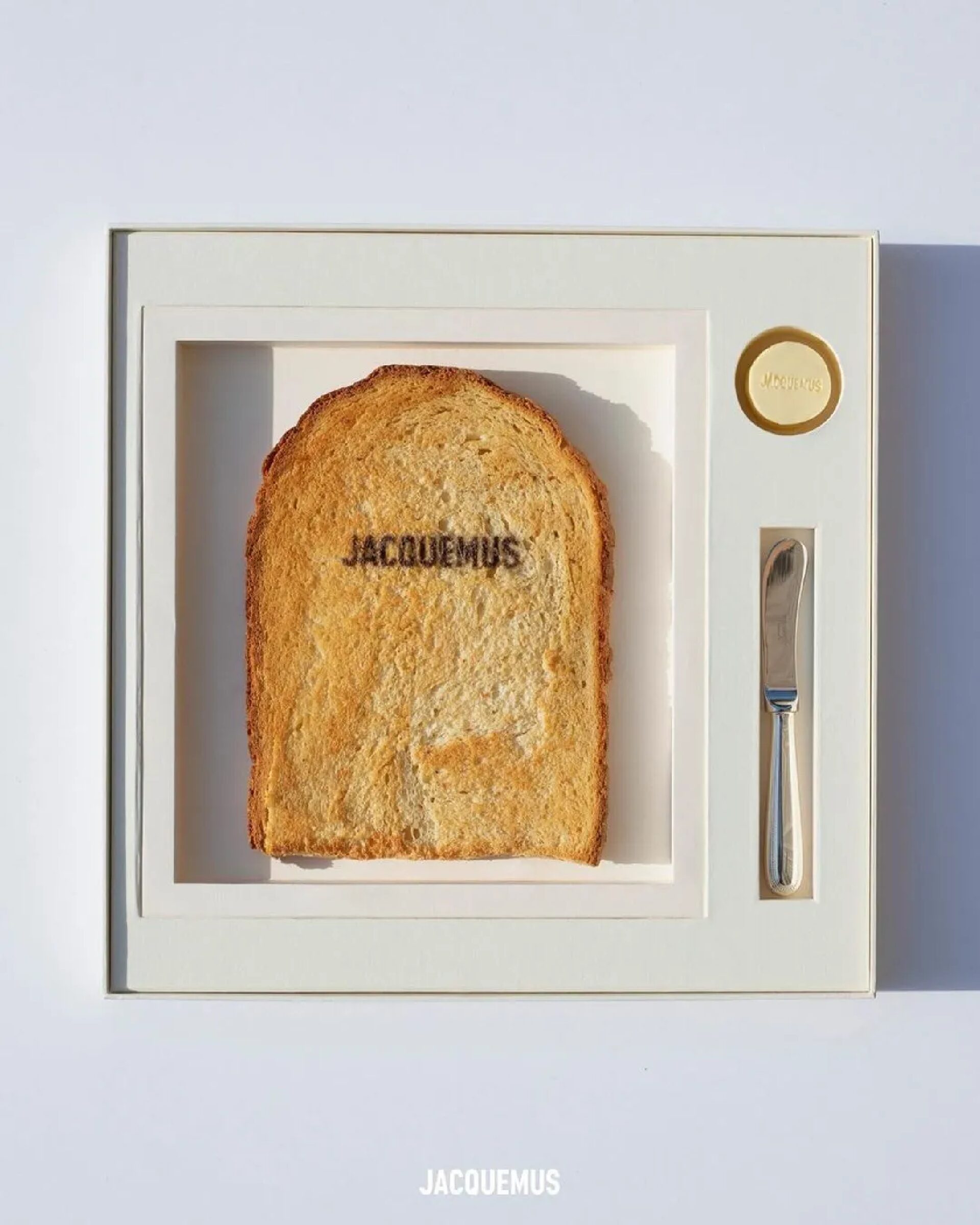the sunday papers
the edit for all things social media, marketing and content creation.
Brands are tapping into sensory marketing designed to make you crave their products and entice you to ‘taste’ them. Sensory marketing is about stimulating our five senses to make brands and products become more memorable and desirable.
We are seeing a rising trend of beauty and fashion brands using gustatory imagery in their marketing – appealing to our taste sense. Pairing non-food products with food creates enticing and interesting visuals. Food pairs well with beauty and fashion as it creates an aesthetic that makes the products look desirable and delicious By leveraging the universal appeal of food, brands such as Rhode and Jacquemus, are creating campaigns that both garner attention and trigger an emotional response from their audience.
Desirable
If a product is placed next to food, it will naturally look more appetising. Particularly, if we see a food we like (e.g., whipped cream), it entices us to try the product. Descriptive language like ‘buttery’, ‘glazed’ and ‘velvety’ paints a sensory picture for the consumer, aided by the food visuals. By using foods to convey the taste, smell and overall aesthetic of their products, it helps bring life and desirability to products.
Positive associations
Images of dessert and sweet treats have associations with indulgence. By pairing products with food, brands can connote luxury and self-care, prompting their audience to ‘treat’ themselves. It encourages people to build positive associations with the brand. Rhode does this so well! Food triggers feelings of comfort, warmth and enjoyment – making the image feel more relatable. People are drawn to images that evoke emotion and few things do this as universally as food.
Attracts attention
Novelty and absurdity attracts attention. These pictures create an aesthetic contrast; the juxtaposition of products and food adds an element of surprise, making the content memorable and shareable. Using food to promote loungewear creates an unusual juxtaposition to stop the scroll – why would waffles be sandwiched between clothes?
Visually interesting
The aesthetic contrast makes the composition of the photos more visually interesting. This increases its noticeabiltiy and engagement. It is also fun! Brands can illustrate the product’s texture and smell – no words needed!
Creates familiarity
Placing a product alongside something as universal as food creates a sense of familiarity. Put simply, food is something that we can all love and relate to! Viewers feel more connected to the product if it is perceived to be already part of their daily lives.
The lipstick index theory
Food is not new to advertising, but we have seen a rise in food marketing since the pandemic. There is a reason for this; the ‘lipstick index’ is the economic theory that suggests that during economic downturns, people buy small luxuries like lipstick to boost their morale when it’s too expensive to buy larger items like travel abroad. Food is quickly becoming the new luxury and since we all have to eat, food is our universal indulgence.
Does food marketing tempt you to taste the products?
The art of sensory marketing
November 15, 2024
